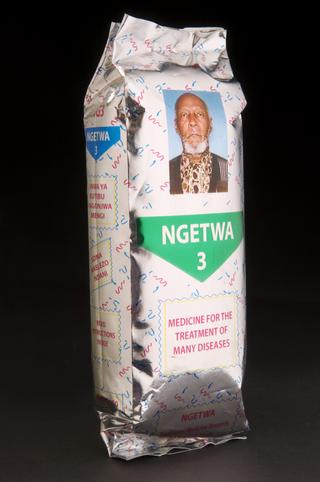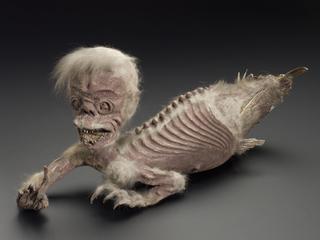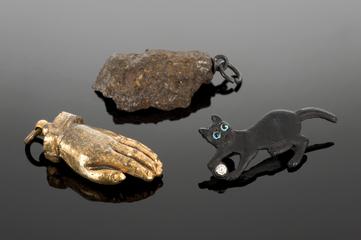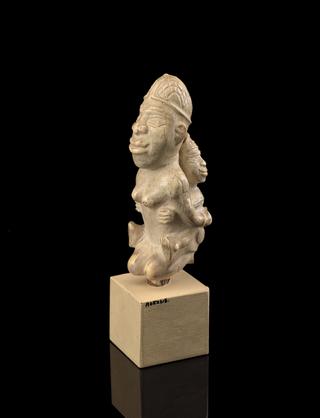

Iron nail called "St. Hubert's Key", used for cauterising dogs bitten by rabid beasts, De Mortillet Collecion from St. Hubert, Belgium, 1880-1920
St Hubert’s Keys were a traditional European treatment for rabies that was still in use until the beginning of the twentieth century. They took the form of a bar, nail or cross that was either carried or attached to a wall of a home for added protection. A priest would prick the forehead of a person with rabies and a black bandage would be applied for nine days while the heated key was placed on the body where the bite had occurred. This could actually help because if the heated key was applied immediately it could cauterise and sterilize the wound, effectively killing the rabies virus.
Hubert was one of many Christian saints said to cure rabies and the key was supposedly given to him by St Peter. Rabies is fatal to humans unless treated immediately with anti-rabies serum, which was only available from the 1880s. St Hubert (c. 656-c. 728 CE) was from Belgium and is the patron saint of hunting – he converted to Christianity while out on a hunt.
Details
- Category:
- Ethnography and Folk Medicine
- Collection:
- Sir Henry Wellcome's Museum Collection
- Object Number:
- A666132
- Materials:
- iron
- Measurements:
-
overall: 67 mm 15 mm, .008 kg
- type:
- nail
- credit:
- Loan, Wellcome Trust




